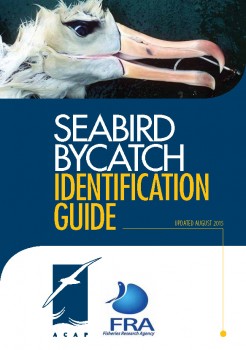At the first meeting of the Joint Tuna RFMO Technical Working Group on Bycatch in July 2011, ACAP offered to develop a standardised seabird identification guide to assist with the harmonisation of data collection across the RFMOs (Regional Fishery Management Organizations). Working with the Japanese National Research Institute of Far Seas Fisheries in March 2015 the ACAP Secretariat produced a photo identification guide for use by observers at sea. Following some initial feedback, an updated version was produced in August 2015 in English, French, Spanish, Portuguese, Traditional Chinese and Simplified Chinese. The guide was also translated into Korean and Japanese, but the publication of these versions has stalled due to the time and resources required to incorporate updates suggested by experts during the editing process.

The ID Guide is available from the ACAP website and the Secretariat has distributed printed copies at relevant fora in the past four years. The guide has been very positively received in the RFMO and seabird conservation communities, and helpful feedback from users and seabird experts has been provided to the Secretariat on ways to improve it in the future.
The ID Guide was intended to also be used as a basis for adapting or developing regionally specific ID materials. This has already been the case with some ACAP Parties and range states taking advantage of this freely available resource. However, in order for the ID Guide to remain relevant for this purpose, and remain useful in its own right, it now needs to be revised and re-issued.
ACAP’s 2016-2018 Advisory Committee Work Programme (Task 5.15) calls for the update of the seabird bycatch ID guide, allocating core funding for the tasking of an intern/secondee to undertake the work, plus costs associated to translation, graphic design and printing. Consequently, the ACAP Secretariat has organised an internship in collaboration with agencies and organisations in New Zealand, tasking Cristián Suazo of Albatross Task Force Chile to undertake the work. Cristian will work with experts in Australia and New Zealand to update the ID Guide, starting next month. He has already started off by making an online call for pictures of live and dead seabirds with an emphasis on the 31 species of ACAP-listed albatrosses, petrels and shearwaters for the updated guide to
John Cooper, ACAP Information Officer, 06 August 2018

 English
English  Français
Français  Español
Español